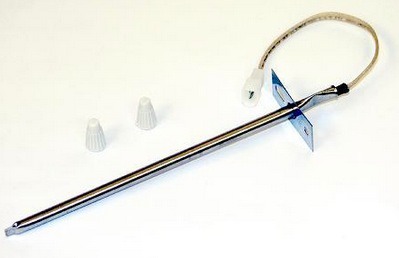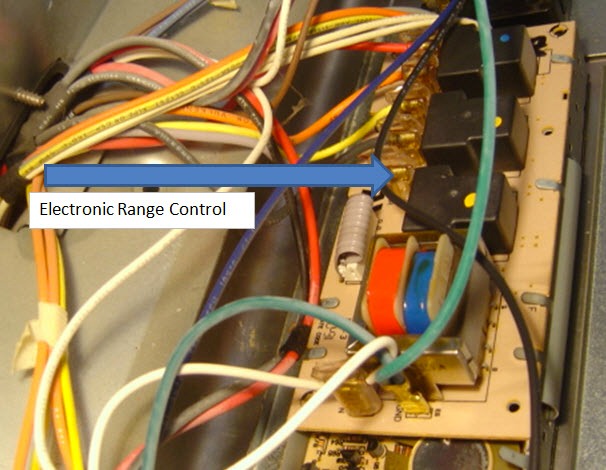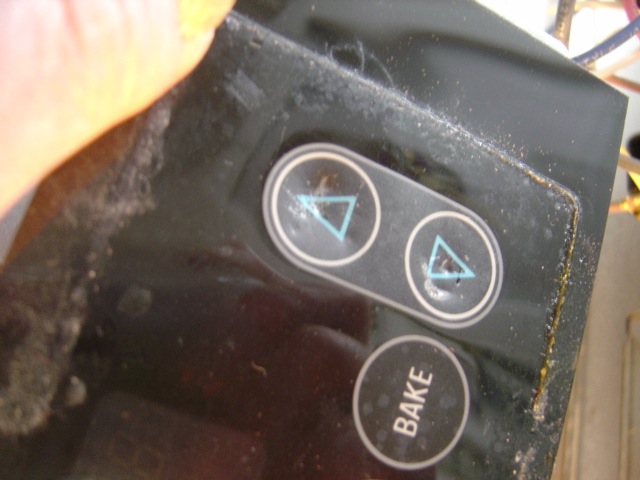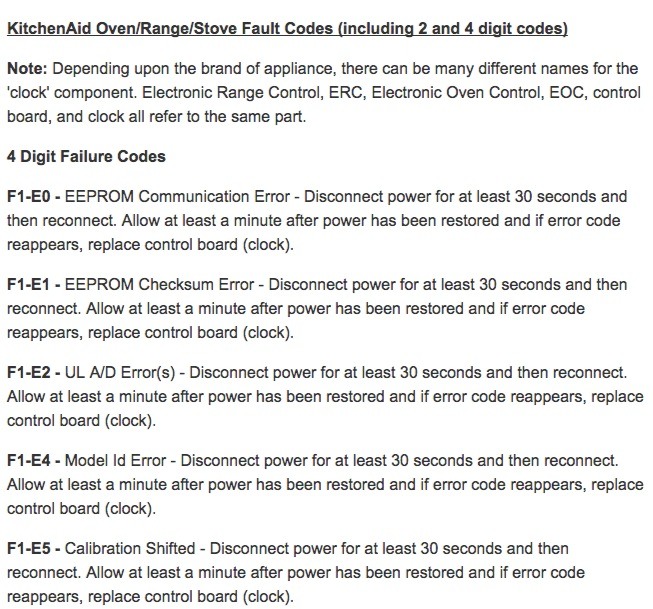During the 1990's computer boards became a common appliance component. They are designed to perform certain internal checks. When errors are discovered the readout will display an appropriate error code such as F-2. In theory this is a great diagnostic tool and, yes it is, but there are definite limitations. First the common codes:
1. F-3 Replace oven sensor. All ERC's sense temperature from a thermistor mounted in the oven cavity. The resistance of the sensor is about 800 ohms at room temperature and goes down as the oven heats. This change is monitored by the computer which opens and closes the bake and broil relays. If the sensor shows an open or short circuit the ERC will read F-3. This is an easy fix. Replace the sensor. Often this can be done from inside the oven cavity exercising special care to use porcelin wire nuts due to the high temperatures. Porcelin nuts seldom grip the wires very well so you must be very careful not to dislodge them when replacing the wires in the little hole.

Oven Sensor with Wire Nuts
2. F-8 Bad ERC. This code has become very common and is often misleading. ERC's are truly fragile and subject to failures when any voltage fluctuations occur in the utility power. ERC failure is very common in rural areas where storms cause voltage spikes. But there is a major snag here. A problem with the touchpad membrane will often cause the same code!

3. F-7 Bad touch pad. Simple wear and tear, heat, overzealous cleaning with sprays and moisture from cooking and boil overs can all result in a membrane failure and an error code. (A few clues. A bad touchpad will cause a code and incessant beeping is the middle of the night- at any random time - and may go weeks between failures. ERC failures most often occur during oven operation. They are more heat sensitive than a pad) As an experiment, a hair dryer may make the code and beeping go away. This will confirm a diagnosis. Get the customer to give it a try.

Damaged TouchPad
Unfortunately, an error code cannot be trusted and guesswork comes into play. Blind trust will definitely get you in trouble. Both ERC's and membranes are equally expensive. The really unfortunate part is NO ONE can tell for sure which is which in all cases. Trust me, for years I have asked pros, and been asked by pros for a solution to this dilemma; there just isn't one. I'll grant that there are lots of test procedures like disconnecting or ohming the membrane. This may be helpful but also misleading. In some situations, like a visibly damaged pad, the solution is obvious. Nevertheless, often any diagnosis is a guess.
There are two approaches to this problem.
Solution 1. The best method is to simply price the job high and replace both; expensive of course, but clean, quick and the job is history.
Solution 2. Second, is to make your best guess and buy only one first and install it. Cheaper for sure but risky and customers get very moody when a $150.00 part doesn't fix anything. Plus, you are out the labor. It is wise to explain the risk to the customer up front and partner with them. Replace the cheaper part first. If that doesn't work get the other part. Don't agree to take the unnecessary part back off because you will never find another home for it. Few of us have the luxury of returning electrical parts. An unfortunate, but an unavoidable and very common situation.
4. F-2 Over 500F. If a customer uses the broiler and fails to crack open the door, the console area may sense an over heat condition and generate an error. A power reset is the first approach. Some models have a thermal fuse inline with the sensor circuit. (See oven will not bake.) This may melt out and need replacing. Beyond that the board or pad may be damaged.
Following is a sample list for Kitchen Aid Oven Error Codes. You will find more detailed lists by design and brands in my library.
